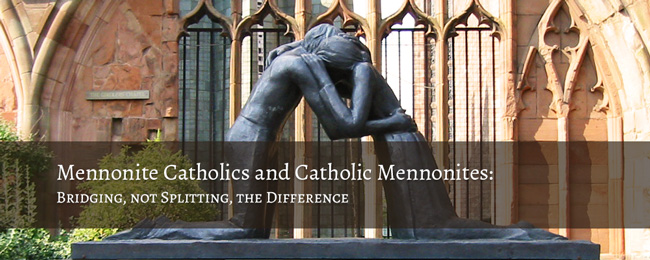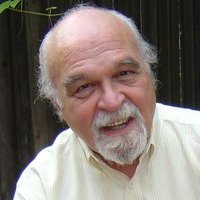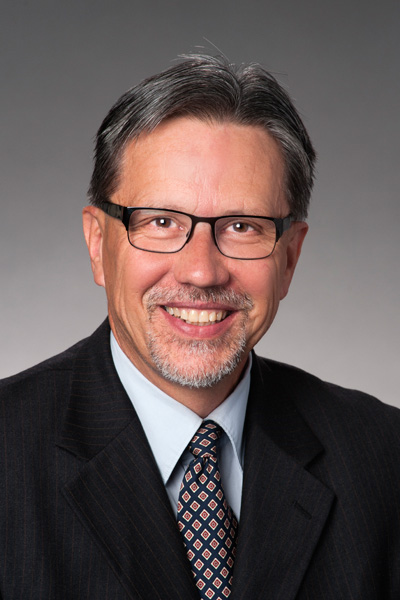
In one sense, Stearns County, Minnesota is no hub for Mennonite Christians. Heavily German and Catholic, with a smattering of Lutherans, evangelicals, and Somali Muslims, the county is home to nary a Mennonite congregation or Anabaptist community to speak of. But in another sense, because of what has been happening at the Collegeville Institute and Saint John’s Abbey, Stearns County has become a Mennonite landmark. Bridgefolk, the North American Mennonite-Catholic dialogue, meets regularly at Saint John’s Abbey, and the Collegeville Institute has attracted a number of Mennonite scholars and workshop participants over the years. Terms like “Mennonite Catholic” and “Catholic Mennonite” are commonly spoken on our campuses. In conjunction with a recent Bridgefolk gathering, Janel Kragt Bakker prompted a conversation among several leaders of the Mennonite-Catholic dialogue—each of whom has been affiliated with the Collegeville Institute and somehow claims the dual identity of Mennonite and Catholic.
Participants in the conversation included Gerald Schlabach, Ivan Kauffman, and Weldon Nisly, all of whom were cofounders of Bridgefolk. (Marlene Kropf, an additional cofounder, was unable to be present.) Gerald Schlabach is a current resident scholar the Collegeville Institute and professor of theology at the University of Saint Thomas. Raised Mennonite and married to a Mennonite pastor, he became Catholic in 2004. He is a Benedictine oblate at Saint John’s Abbey.

Ivan Kauffman
Sharing the Mennonite-Catholic designation is Ivan Kauffman, a former Collegeville Institute resident scholar who also became Catholic after growing up Mennonite. Ivan has been active in Mennonite-Catholic dialogue since its beginnings in the 1990s. On an international level, Ivan served as advisor to the Catholic co-chair of the Vatican-sponsored Mennonite-Catholic international dialogue. With his wife Lois, Ivan currently runs the Michael Sattler House near the campus of Saint John’s, which offers hospitality for leaders in both traditions who are working toward social justice.
In the Catholic-Mennonite category, Weldon Nisly joined the conversation. Having recently retired as lead pastor of Seattle Mennonite Church, Weldon plans to live at the Collegeville Institute as a resident scholar next spring. He is also an oblate of Saint John’s Abbey. Unlike Ivan and Gerald, Weldon chose not to join the Catholic Church, though he is steeped in Benedictine spirituality and embraces many facets of the Catholic tradition. We asked each of these leaders to describe how they came to identify with both traditions, and we probed their participation in Mennonite-Catholic exchange.
Working and worshiping with Catholics helped form my sense of who I am as a Mennonite and a Mennonite pastor.
Weldon Nisly: For me, Mennonite-Catholic relations began through the peace movement. As a peace minister in the 1970s, I often found myself working alongside Catholics. I started going on retreats at Catholic monasteries and began exploring the link between the contemplative life and peacemaking. I became increasingly interested in how prayer and peace intersect. I came out of a very conservative part of the Mennonite church. As I grew up I knew I wasn’t attracted to a sectarian or farming life, and that instead the city and the “world” would be my home. Working and worshiping with Catholics helped form my sense of who I am as a Mennonite and a Mennonite pastor. In the circles of progressive Anabaptist community organizers and peace activists I came to move in, our temptation was to become just like secular activists. The Catholic peace activists I encountered, with their strong ecclesiology and attachment to the Eucharist, were securely grounded in their need for the church. We Mennonites learned from them.
I also saw Michael Sattler, an Anabaptist leader in the sixteenth century who had been a Benedictine monk, as a bridge between the two traditions. Michael Sattler is the Anabaptist leader to whom I am most drawn. In 2001, I came to the Collegeville Institute to, in a way, retrace his steps—learning about the monastic life and Benedictine spirituality through participating in worship at Saint John’s Abbey, and researching how Michael Sattler carried Benedictine values into the new Anabaptist movement.
Ivan Kauffman: I began straddling the Mennonite and Catholic worlds in the 1960s. Back then, identifying as both Mennonite and Catholic just wasn’t done. What forced me over the wall between the two traditions was a serious personal crisis I went through in college. I have a strong, inborn concern with history. I believe history matters and that we are all products of our history. We have to know our history to be healthy people, and certainly healthy Christians. As an undergraduate history major, I began to ask when the fall of the church occurred. Back then in my Mennonite context, I was taught that the church had died with Constantine and had not come back to life until the time of Martin Luther, who was only partly able to bring about restoration. I started questioning this narrative and came to the strong conviction that even though some bad things had happened in church history, there had been no fall of the church. I concluded that the Catholic narrative of church history was much more accurate than what I would now call the Anabaptist myth. My studies forced me into the Catholic Church.
What has kept me in the Catholic community has not been intellectual considerations, as important as they are. It’s been the Eucharist.
I did not know a single Catholic personally at that point. I had never been to a Catholic mass. My connection with Catholicism was totally intellectual. I tried to stay Mennonite for a while, but later on in that decade I decided it was dishonest for me to continue to be in leadership in the Mennonite church when I did not share some of the fundamental beliefs that were in place at that time. At that point I officially became Catholic, a transition that was very painful for my family and for me. What has kept me in the Catholic community has not been intellectual considerations, as important as they are. It’s been the Eucharist. Regular participation in the Eucharist is what sustains us as Christians. We can’t follow Christ unless we are willing to be fed by Christ.
I have not felt the need to become the “convert” who burns bridges and turns my back on my formative community.
Gerald Schlabach: I resonate with portions of both Weldon’s and Ivan’s stories. I became Roman Catholic in 2004, while remaining an associate member in a Mennonite church. Sometimes people ask me for the top reason I became Catholic, which I cannot give. Looking back, before becoming Catholic was even on my horizon, I was being formed by the Second Vatican Council, Catholic social teaching, and the Catholic charismatic movement. Vatican II, which opened up new conversations in the Catholic Church about peacebuilding, liturgy, justice, and attitudes toward the world, made becoming Catholic imaginable for me. Vatican II also took the global church seriously, accentuating the idea that the gospel is for all people everywhere. I found the Catholic commitment to being a truly global church increasingly compelling, especially as I worked for peace and justice in Central America as a young adult. At the same time, like all of us here, I’ve been deeply formed in the Mennonite tradition. I have not felt the need to become the “convert” who burns bridges and turns my back on my formative community. It’s no coincidence that we who are involved in Mennonite-Catholic dialogue call ourselves Bridgefolk precisely to make that point. We’re not burning bridges, we’re building bridges.
Alongside their narratives of making personal connections between the Mennonite and Catholic traditions, we also asked Weldon, Ivan, and Gerald to describe how and why Bridgefolk came to be.
Weldon Nisly: Bridgefolk was initiated largely by people who came out of the Mennonite tradition and were drawn to Catholicism. A number of Catholics who were attracted to various aspects of the Mennonite tradition have also joined.
Gerald Schlabach: Bridgefolk began with a “bridging retreat” for 25 people in 1999 to explore Mennonite-Catholic connections that kept emerging and to share personal stories of convergence between the two traditions. Most of those present were people who came out of the Mennonite tradition but were drawn to Catholicism, especially because of its rich resources for the contemplative life and the liturgical/sacramental life. Of the Catholics who attended that retreat or have since become involved in Bridgefolk, many are attracted to the Mennonite tradition because of its strong commitment to peace.
Ivan Kauffman: Some also admire Mennonites’ strengths in lay participation and lay leadership, especially in the face of the dangers of clericalism in the Catholic Church. At first, Bridgefolk had a hard time attracting Catholic participants. That changed when Abbot John from Saint John’s Abbey became involved. When a group of us approached Abbot John in 2001 about becoming involved in Bridgefolk, I said, “Abbot, we have a big group of Mennonites who want to talk to Catholics, but we need Catholics who want to talk to Mennonites. These two communities need each other. If they don’t start learning from each other, Mennonites are going to starve from inadequate spirituality and liturgical traditions, and Catholics are going to become obese—taking in more than they are giving.” I’m not sure Abbot John had even heard of Mennonites before this time, and he certainly didn’t know that his family had originally been Mennonite. Whether or not my plea had an impact on him, Abbot John has become a leader in Bridgefolk and an advocate for Mennonite-Catholic dialogue.
We came to see Bridgefolk as an exchange of gifts between members of the two traditions.
Weldon Nisly: Especially under the leadership of Margaret O’Gara, a Catholic theologian and ecumenist who was active in Bridgefolk until her untimely death, we came to see Bridgefolk as an exchange of gifts between members of the two traditions. We bring the blessings and gifts that we have received and offer them to one another. When these blessings are faithful and deep, they spill out for the benefit of others—even beyond the bounds of those who directly participate. I know Margaret was a long-time member of the Collegeville Institute’s Board of Directors. She would have loved to have been part of this conversation.
Ivan Kauffman: Mennonite-Catholic conversations don’t just affect Mennonites and Catholics. People outside of both of these worlds are saying, “If Mennonites and Catholics—located at the far ends of the spectrum of Christians—can find some way to recognize each other as Christians and even to learn from each other, surely everyone closer to the middle can find common ground as well.”
In the second part of the interview, Weldon, Gerald, and Ivan explore how the conversations between Mennonites and Catholics have enriched participants in both traditions, how Bridgefolk has navigated painful divisions, and how Bridgefolk functions in an era often labeled “post-denominational” and “post-ecumenical.”
Read Mennonite Catholics and Catholic Mennonites, Part Two—Bearing Pain for the Good of the Church
Image credit: David Merrett, Reconciliation sculpture by Josefina de Vasconcellos, via Flickr Commons.
Like this post? Subscribe to have new posts sent to you by email the same day they are posted.





I think this is a really amazing thing that you guys are doing in discussing the differences and similarities of Mennonites and Catholics, to bring these two groups closer together. I grew up in a Lutheran school environment, drifted away from religion for many years and now as an adult married into a Catholic family, I am making friends with Mennonites and attending their church because of the beautiful peace vibe and kindness they so easily bestow on others. The die to self and focus on really serving the Lord and doing away with earthly possessions that mean nothing at the end of the day is such a major focus, among other things, with the Mennonites. Catholics also do so much for their communities and stay true to their traditions, worshipping the same God and venerating their beautiful, historical Saints and Virgencitas, to stay close to the Lord. I have lived in both Spain and Argentina, and now I live close to Mennonites. It hurts me to see Christians condemn each other for technicalities, choosing to judge each other instead of coming closer and putting themselves in each other’s shoes. Thank you for building this much needed bridge and keeping this great discussion alive.